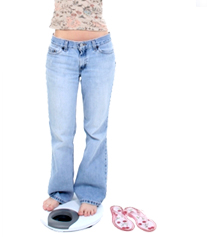|
 |
What is Kinesiology and how can it help youKinesiology is a method of maintaining health by ensuring that all the muscles of the body are functioning correctly. It is believed that each of the muscles is connected with a specific part of the body such as the digestive system, circulation of the blood and specific organs. If a muscle is not working correctly this will cause a problem in its related part of the body. Kinesiology originated in 1964 and was developed by an American chiropractor called George Goodheart. Whilst treating a patient for a severe pain in the leg he found that massaging a particular muscle in the upper leg relieved the pain and at the same time strengthened the muscle. However when he used the same method on different muscles the results were not the same. Previous research done by an osteopath called Dr Chapman found that there were certain 'pressure points' in the body that were connected with particular muscles. Chapman found which point was connected to each particular muscle and realised that when he had massaged the patients upper leg muscle, the pain had decreased. The pressure point for that leg muscle was the only one that was situated above the actual muscle. All the other points were not close to the part of the body with which they were connected. In the 1930's an osteopath called Terence Bennett claimed that were similar pressure points located on the skull. If light pressure was applied to these pressure points the flow of blood to the related organs could be assisted. George Goodheart tested this claim and found that if finger tip pressure was only applied for a few seconds the strength of a particular muscle was improved. He was able to locate sixteen points on the head, back of the knee and on the breastbone that were all linked to groups of important muscles. To further his studies Goodheart applied himself to acupuncture, which is a form of healing that also makes use of certain points on the body but that run along paths known as meridians. He came to the conclusion that these meridians could be used for both muscles and organs. The paths used in kinesiology are exactly the same as the paths used for acupuncture. A kinesiologist will examine a patient and attempt to discover if there is any physical disorder, lack of energy or bad nutrition that is causing problems. When the problem areas have been located, a light massage will be applied to the relevant pressure points (usually not close to the associated muscles). In kinesiology it is maintained that the use of pressure points works because the flow of blood to the muscles is stimulated. This will ensure that a supply of lymph is generated as well; lymph is a watery fluid that takes toxins away from the tissues. As with acupuncture it is believed that that there is an unseen flow of energy running through the body. When this flow of energy is disrupted due to a person being ill or suffering from stress, the body will become weak because insufficient energy is being produced. Testing the strength of the muscles will provide information on the flow of energy and help in assessing the general health of the patient. It is claimed that by finding any imbalance and correcting it, kinesiology can be used as a preventative therapy. If a person is feeling tired all the time it is believed that this condition is made worse by the the slow flow of internal body fluids such as the circulation of blood. Kinesiologists are able to teat this problem by stimulating the flow of lymph and blood by massaging the pressure points. It is claimed that kinesiology can be of benefit to those people who suffer from phobias or irrational fears. An example of this is the recommendation that the bone beneath the eye, level with the pupil, is softly tapped. Neck and back pain can be treated without any need for manipulation of joints. Massaging of the muscle that is located in the inner thigh can be of benefit for muscles that are weak as they are a reason for a painful back. Kinesiology is is also used by practitioners of homoeopathy, herbalism and osteopathy. Therefore if there is a problem that is connected to ligaments, muscles or bones, it may well be advisable to contact a osteopath or chiropractor who is also qualified in kinesiology. If the problem is of a emotional or mental nature, then it may be advisable to contact a psychotherapist or counsellor who is also practises kinesiology. This article has been written by Andrew Tomkinson. http://www.fitnesshealthnutrition.org Weight Loss Arreglarse Las Uas es Bsico para las Relaciones - Arreglarse las uñas y mejorar la presentación personal permite que sus relaciones personales mejoren y hasta consiga un mejor trabajo. The Truth about Plastic Sugery Abroad - About plastic surgery abroad. Discover Motivation Via Hypnosis And Hypnotherapy Home Study Course - Selfhypnosis has been peddled by not a few as a solution to various problems ranging from stress to pain relief and even sleeping disorders. What Does Eye Surgery Entail - Amore permanent solution for many individuals exists with a laser eye surgery procedure such as LASIK. Deli Sandwich For Lunch Pizza For Dinner Is This Your Staple Diet - What's in your lunch box? Is the local sandwich deli your standard lunch time meal? This and the pizza on the way home from the office may be your reasons for piling on those kilos. more... |
|
|
|
|
|
© Copyright 2025 terredimages.com All rights reserved. |